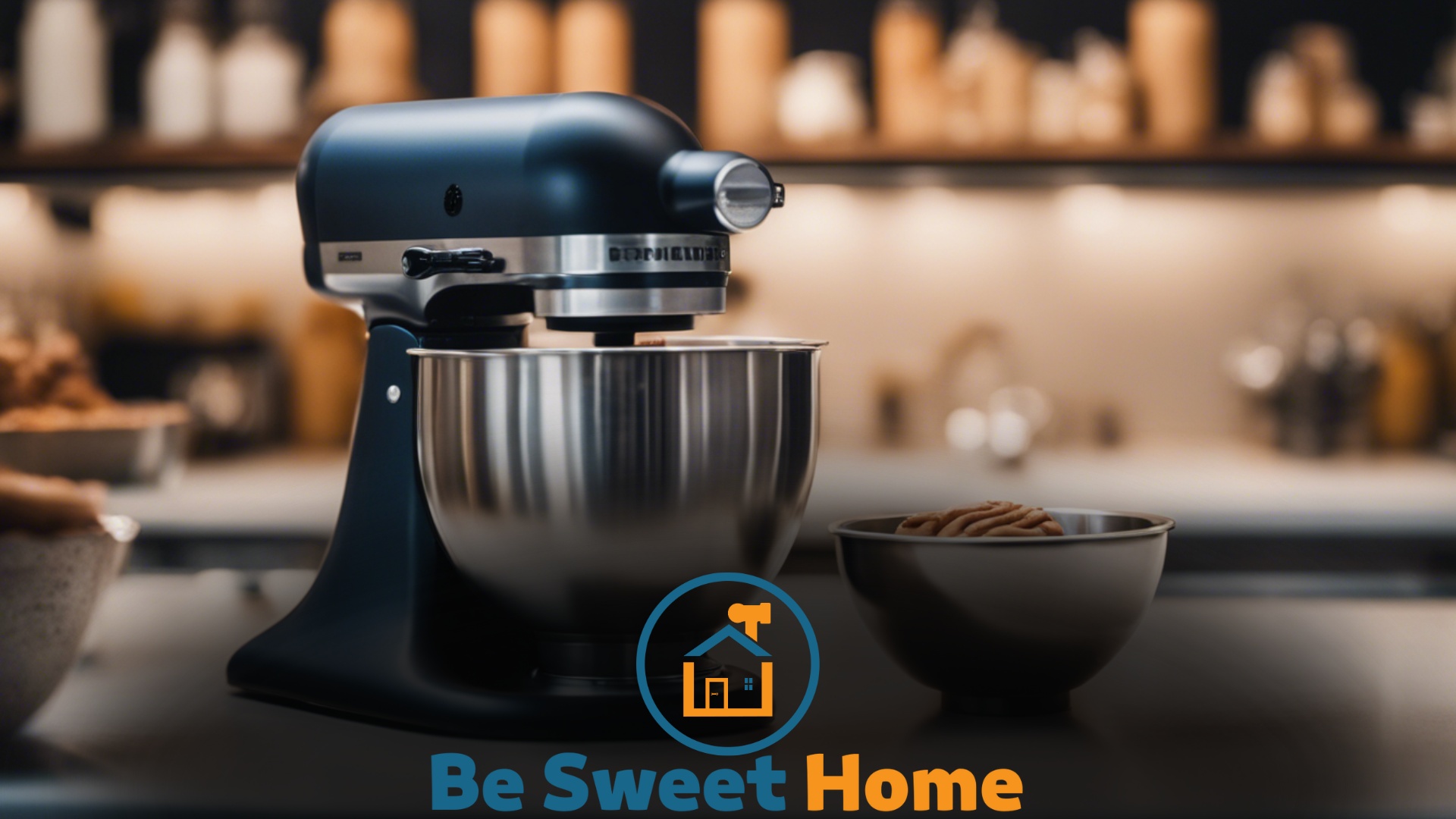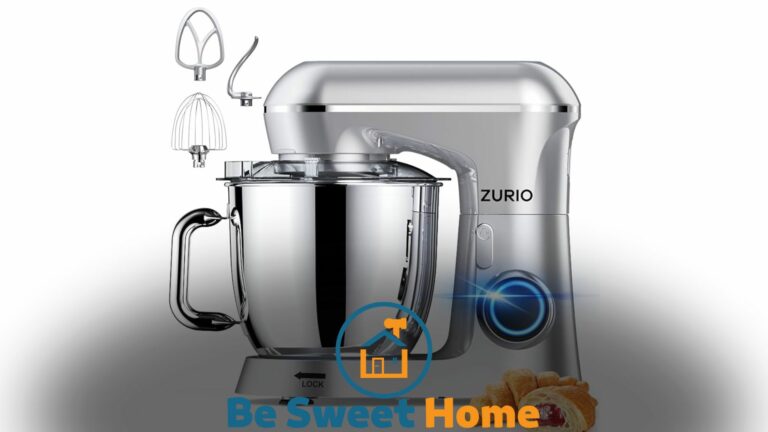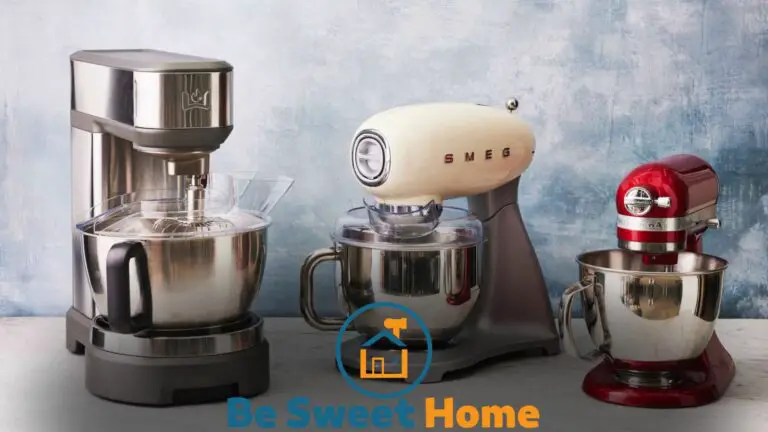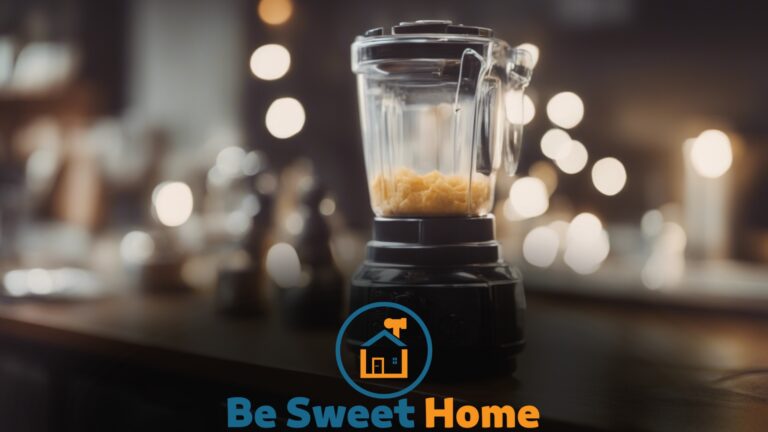

Consider a stand mixer’s power, capacity, attachments, and price when buying it. Evaluate the mixer’s durability and warranty for long-term use.
Embarking for the perfect stand mixer is an exciting journey for any baking enthusiast or home chef.
This versatile kitchen gadget has become essential for various culinary tasks, from whipping up fluffy meringues to kneading tough bread dough.
It’s important to assess the mixer’s motor strength, as this dictates its ability to handle heavy mixtures and prolonged use.
The size of the bowl is also crucial, as it ensures that you can tackle recipes of any volume without the need for multiple batches.
Take note of the variety and interchangeability of attachments available, as they can significantly extend the functionality of your appliance.
Furthermore, the price point and the manufacturer’s warranty are key indicators of initial investment and potential future costs.
A well-chosen stand mixer can revolutionize your cooking and become a centerpiece of your kitchen arsenal for years.
Why a Stand Mixer is a Kitchen Game-changer


Imagine effortless mixing and perfecting dough every single time. A stand mixer
makes this dream a reality.
It’s not just a tool but a partner in culinary craftsmanship.
Let’s explore the game-changing facets of owning a stand mixer.
Transforming Home Baking
A stand mixer takes home baking to new heights. No more tired arms from manual mixing.
Enjoy flawless cakes, cookies, and bread with ease. Here’s what sets it apart:
- Consistent Results – Perfect mixes every time.
- Time-saving – Mix dough in minutes, not hours.
- Multi-tasking – Prep the next steps while it works for you.
Versatility in the Kitchen
A stand mixer is versatile and more than just a baker’s companion. See how it
adapts to various tasks:
| Attachment | Function |
|---|---|
| Dough Hook | Kneads bread effortlessly |
| Whisk | Creates airy meringues and whipped creams |
| Paddle | Creams butter and sugar perfectly |
| Pasta Roller | Homemade pasta without the hard work |
Each attachment transforms the mixer’s function, making it a powerhouse in the kitchen.
Assessing Your Culinary Needs
Choosing the right stand mixer is a crucial step for any baking enthusiast. Think of a stand mixer as an investment in your culinary adventures.
Your baking habits define the ideal mixer. Size, power, and accessories depend on your kitchen activities. Let’s dive into what matters for your choice.
Baking Frequency and Volume
How often you bake is vital when selecting a stand mixer. Occasional bakers may require a basic model, while frequent bakers need durability and endurance. Ask yourself:
- How often do I bake?
- What batch size do I usually make?
Consider more robust models for large or daily batches. They keep up with your demands without overheating.
Type of Recipes to Explore
Stand mixers come with various attachments. They cater to different recipes and techniques.
- Do I make bread often? (Consider mixers with dough hooks)
- Love making pastries? (Look for mixers with pastry beaters)
- Are you eager to try new recipes? (Choose mixers with multiple attachments)
Bold flavors demand bold choices in kitchen tools. Match mixer capabilities with your baking aspirations.
Stand Mixer Power and Performance
Exploring the machinery behind a stand mixer is key before buying one. You need a mixer that can handle everything from whipping cream to kneading dough.
Let’s dive into mixer power and performance essentials to ensure you select the perfect kitchen companion.
Motor Strength and Wattage
The motor is the heart of a stand mixer. Motor strength is critical for longevity and efficiency. Look for higher wattage for tough tasks.
- 250 Watts: Suitable for basic mixing tasks.
- 500 Watts: A mid-range option for denser doughs.
- 1000 Watts and up Professional-grade power for all tasks.
Choose a mixer with adequate power to meet your baking and cooking needs.
Speed Settings and Controls
Customization is crucial when blending ingredients. Various speed settings grant control over the mixing process.
| Speed Option | Use Case |
|---|---|
| Stir | Combining dry ingredients |
| Slow Mix | Starting heavy batter |
| Medium | Creaming butter and sugar |
| High | Whipping cream or egg whites |
Opt for mixers with easy-to-use controls. Touchpads, knobs, or buttons should be straightforward and accessible.
Look for a mixer with a smooth start feature. It prevents splattering by gradually increasing speed.
Key Features and Attachments
Stand mixers are a baker’s best friend, but choosing the right one can be tricky.
Key features and attachments can make a big difference in your baking. Let’s explore what to consider.
Bowl Capacity and Material
One of the most important aspects of a stand mixer is its bowl. Size matters here, and bowl capacity is crucial, depending on what you bake.
Large families or party planners should aim for larger bowls.
| Bowl Capacity | What it’s Good for |
|---|---|
| 3-4.5 quarts | Small batches, cookies, meringues |
| 5-6 quarts | Multipurpose, bread, cakes |
| 7+ quarts | Bulk baking, large recipes |
Bowl material also matters. Stainless steel is durable and easy to clean, while glass lets you see your mix.
Plastic is lighter but may not last as long.
Available Accessories
Attachments turn your mixer into a multi-use tool. Look for mixers that come with a variety of accessories.
- Flat Beater – For cookies and batters
- Whisk – For whipping cream or egg whites
- Dough Hook – Kneads bread dough
Some mixers offer even more. You might find:
- Pasta rollers
- Meat grinders
- Vegetable spiralizers
- Ice cream makers
The right accessories can replace other kitchen tools, saving space and money.
Choose a mixer that grows with your needs, offering attachments for future baking adventures!
Evaluating Design and Building Quality
Stand mixers are a baker’s best friend, but not every mixer is built the same.
Before adding one to your arsenal, scrutinize the design and build quality to ensure you’re investing in the right tool.
A solid stand mixer should be sturdy, efficient, and complement your kitchen’s aesthetics. Let’s explore what makes a stand mixer stand out.
Durability and Longevity
Examine the materials used to measure a stand mixer’s sturdiness. Metal mixers typically outlast their plastic counterparts.
Look for signs that promise endurance, like weighty construction and high-quality components.
- Stable Base: A heavier base prevents rocking during use.
- Metal Gears: These outperform plastic gears for longevity.
- Warranty: A lengthy warranty often indicates manufacturer confidence in durability.
Aesthetics and Counter Appeal
A stand mixer often stays on the countertop, so attractive design matters. Its look should both reflect your style and blend with other appliances.
| Finish | Good For |
|---|---|
| Stainless Steel | Modern kitchens |
| Colorful Enamel | Adding a pop of color |
| Mattes and Metallics | Classic elegance |
Consider the size of your mixer for your counter space. Some mixers come with storage for attachments, adding practicality to great design.
Budget and Brand Considerations
Before buying a stand mixer, consider your budget and brand selection. It’s important to find the right balance between cost and quality.
Also, consider what other buyers say about the brands you’re considering.
Cost vs. Quality
Quality matters when choosing a stand mixer. Don’t just go for the cheapest option. A higher price can mean better performance and durability.
Yet, you don’t need to overspend to get a reliable mixer.
| Price Range | What to Expect |
|---|---|
| $50 – $100 | Basic mixers, limited features |
| $100 – $250 | Mid-range quality, more features |
| $250+ | Premium models, advanced features |
Reputation and Reviews
Look at reviews to check a brand’s reputation. Well-reviewed brands are often more reliable.
Read both good and bad reviews to get the full picture.
- Check star ratings on major retail sites.
- Read comments on kitchen forums and blogs.
- Watch video reviews and demonstrations.
Frequently Asked Questions
How Many Watts Should a Good Stand Mixer Be?
A good stand mixer typically features a power output ranging from 250 to 1,000 watts, with higher wattage for more intensive tasks.
What Should I Look For in a Good Mixer?
Check for a powerful motor, variable speed settings, durable construction, and included attachments that suit your needs.
Ensure easy cleaning and a warranty for peace of mind.
What to Know Before Buying a Kitchenaid Mixer?
Before buying a KitchenAid mixer, consider the model size for your cooking needs and assess.
The power for your recipes, check the available attachments for versatility, ensure it fits your kitchen space, and verify warranty and support options.
What is the Difference Between Cheap and Expensive Stand Mixers?
Cheap stand mixers often have less power, fewer features, and are made with lower-quality materials.
Expensive mixers typically offer more durability, higher performance, and a range of advanced functions.
What Factors Affect Stand Mixer Performance?
Choosing a stand mixer involves evaluating motor power, mixing speeds, capacity, build quality, and included attachments to ensure efficient performance.
Conclusion
Choosing the perfect stand mixer needn’t be daunting. Prioritize your baking needs, budget, and kitchen space. Read reviews and warranty terms carefully.
A quality mixer transforms baking into a seamless, delightful experience. Happy mixing on your culinary journey!




